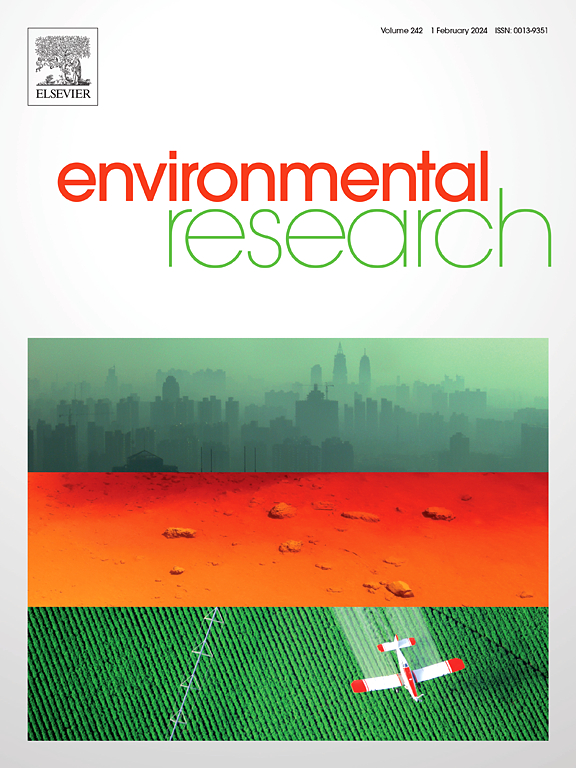Short and long-term exposure to ocean acidification in limpets from the Castello Aragonese vent systems (Ischia Island, Italy)
IF 7.7
2区 环境科学与生态学
Q1 ENVIRONMENTAL SCIENCES
引用次数: 0
Abstract
Ocean acidification (OA) is reported to entail a detrimental impact on calcifying organisms. Nevertheless, patellid limpets – P. caerulea, P. rustica, and P. ulyssiponensis – are able to persist in extremely low pH conditions inside the Castello Aragonese CO2 vent systems (Ischia Island), suggesting that they may have developed tolerance to OA, through plasticity and/or adaptive mechanisms. The aim of this study is to evaluate the long-term strategies adopted by limpets that spent their entire life cycle in naturally acidified conditions and the short-term ones induced by a 30-day in situ transplant experiment.
Regarding native limpet populations, P. caerulea exhibited increasing size and higher energy resources in the extremely acidified site, potentially related to different food availability or to reduction in competition and/or predatory pressure; furthermore, no effects on oxidative stress, biomineralization and neurotoxicity occurred. Similarly, P. ulyssiponensis didn't exhibit any significant effects among different pH conditions regarding biochemical endpoints. Conversely, P. rustica displayed a significant modulation of almost all biochemical parameters, possibly due to its different position on the rocky shore. The short-term exposure of P. caerulea produced a decrease in protein content and an increase in glycogen content in the extreme acidified site, with an induction of superoxide dismutase and glutathione-S-transferases activities in the intermediate pH site.
Overall, our study revealed that different species of the same genus may have developed distinct responses to OA and suggested different mechanisms to cope with short and long-term exposure to low pH conditions.
短期和长期暴露于海洋酸化的帽贝从阿拉贡城堡喷口系统(伊斯基亚岛,意大利)。
据报道,海洋酸化(OA)会对钙化生物产生有害影响。然而,patellid帽贝- P. caerulea, P. rustica和P. ulyssiponensis -能够在Castello Aragonese CO2排放系统(Ischia Island)内的极低pH条件下持续生存,这表明它们可能通过可塑性和/或适应性机制对OA产生了耐受性。本研究的目的是评估在自然酸化条件下度过其整个生命周期的帽贝所采取的长期策略和通过30天原位移植实验诱导的短期策略。在原生帽贝种群中,在极度酸化的地点,帽贝的大小和能量资源都在增加,这可能与不同的食物供应或竞争和/或捕食压力的减少有关;此外,对氧化应激、生物矿化和神经毒性没有影响。同样,P. ulyssiponensis在不同pH条件下对生化终点的影响也不显著。相反,可能由于其在岩石岸边的不同位置,P. rustica对几乎所有生化参数都表现出显著的调节。短时间暴露使毛囊藻极端酸化部位的蛋白质含量降低,糖原含量升高,中间pH位点的超氧化物歧化酶和谷胱甘肽- s转移酶活性升高。总的来说,我们的研究表明,同一属的不同物种可能对OA产生了不同的反应,并提出了不同的机制来应对短期和长期暴露于低pH条件下。
本文章由计算机程序翻译,如有差异,请以英文原文为准。
求助全文
约1分钟内获得全文
求助全文
来源期刊

Environmental Research
环境科学-公共卫生、环境卫生与职业卫生
CiteScore
12.60
自引率
8.40%
发文量
2480
审稿时长
4.7 months
期刊介绍:
The Environmental Research journal presents a broad range of interdisciplinary research, focused on addressing worldwide environmental concerns and featuring innovative findings. Our publication strives to explore relevant anthropogenic issues across various environmental sectors, showcasing practical applications in real-life settings.
 求助内容:
求助内容: 应助结果提醒方式:
应助结果提醒方式:


